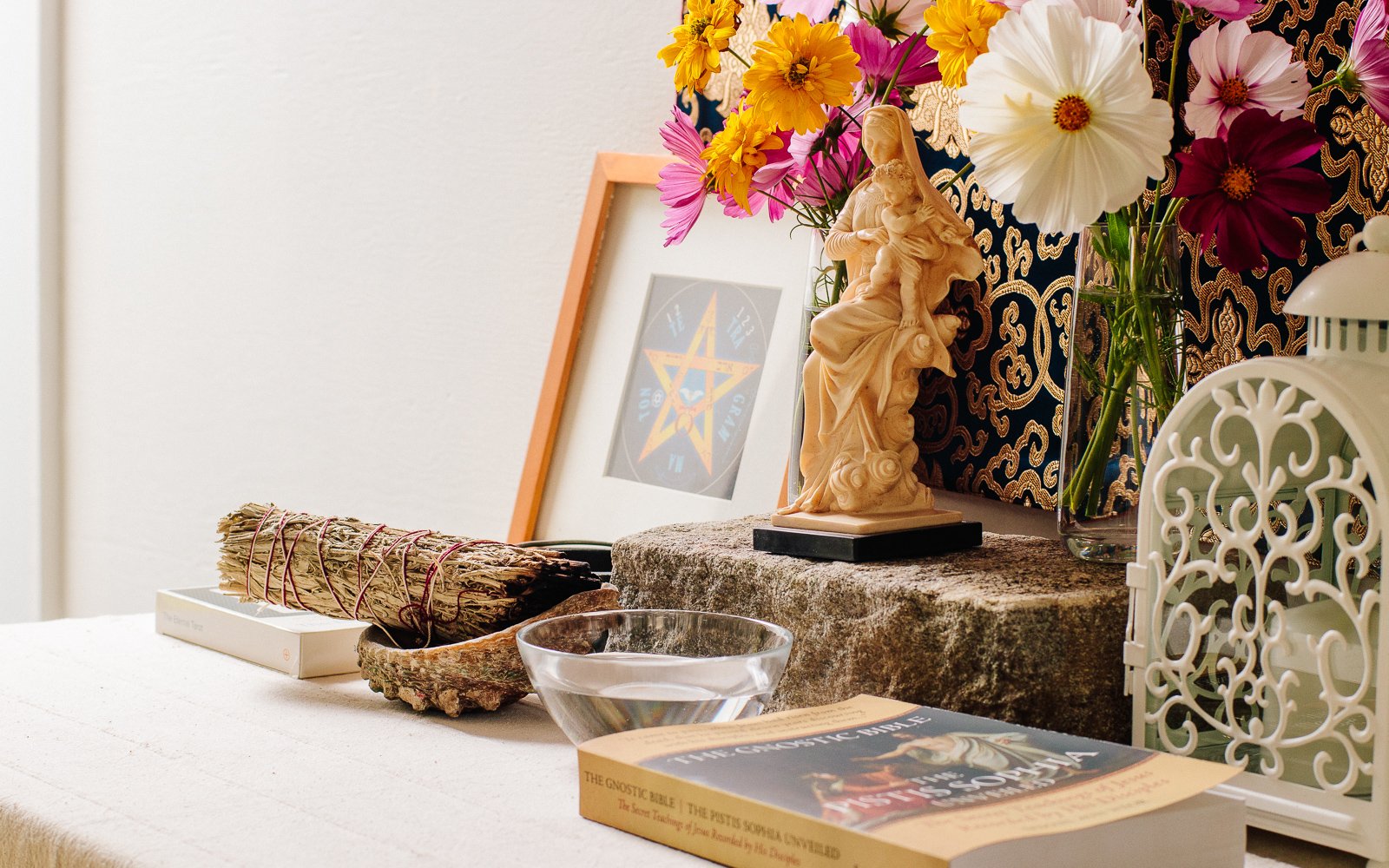The word altar comes from the Latin root for “high” or “elevated”. The altar in any religion or spiritual practice is the focal point of the sacred space. The altar is a place where the divine enters into matter. Everything about the altar has objective spiritual significance and creates impressions that are beneficial for the essence.
In our homes the altar may be in the space where we meditate and pray. The best home altar does not have to be elaborate or expensive. What is important is the dedicated area just for our spiritual practices, and not used for anything else.
In temples and churches the altar is the focal point of the place of worship, the religious symbols are present, and the officiants mediate between the altar and the congregation.
Esoterically, the altar is what we need to create within ourselves. The altar and the sacred objects remind us of potential for an internal transformation.
Altar
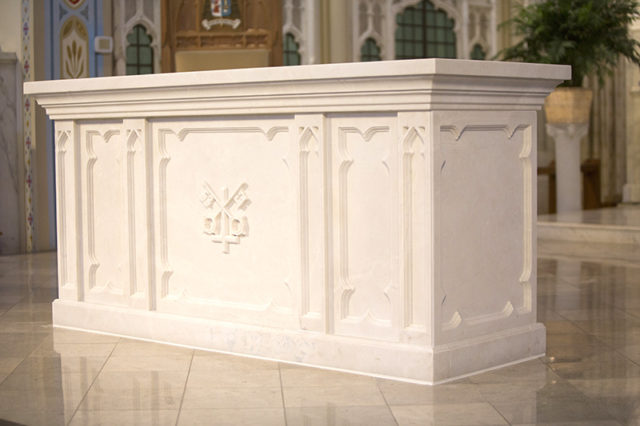
The altar or table itself is the foundation, called Yesod in the Hebrew Kabbalah. The stable, cubic base for all of our psychological and spiritual work, the root vital energy that we use to build our internal cathedral.
Cross
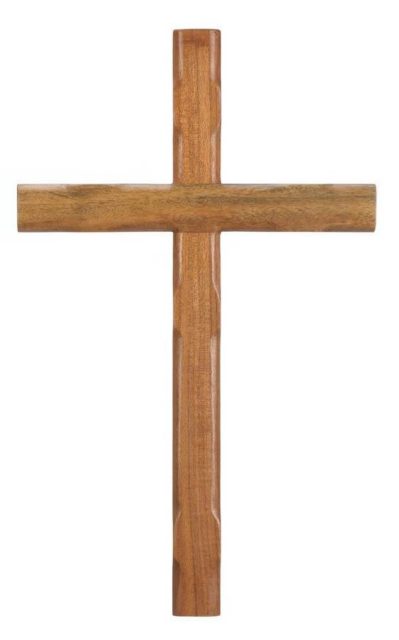
The cross is the internal crossroads, the intersection of the present moment and our past and future. It is the communion of spirit and matter, the sacrifice that each makes in order for that union to take place. It is the home of the cosmic Christ.
Deities, Masters, Saints
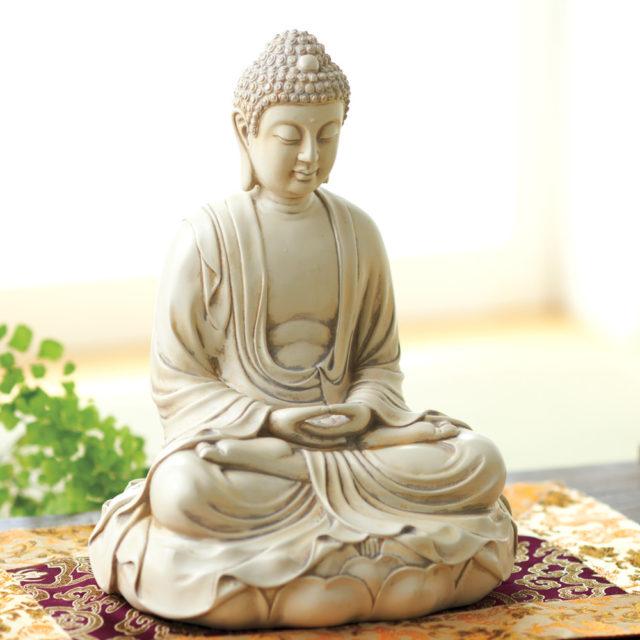 Pictures or statues of a master, guru, saint, god or goddess will help orient us to the values that they embody. A Buddha on the altar reminds us of our inner Buddha nature, the spiritual soul, and the possibility of the incarnation of wisdom.
Pictures or statues of a master, guru, saint, god or goddess will help orient us to the values that they embody. A Buddha on the altar reminds us of our inner Buddha nature, the spiritual soul, and the possibility of the incarnation of wisdom.
Divine Mother
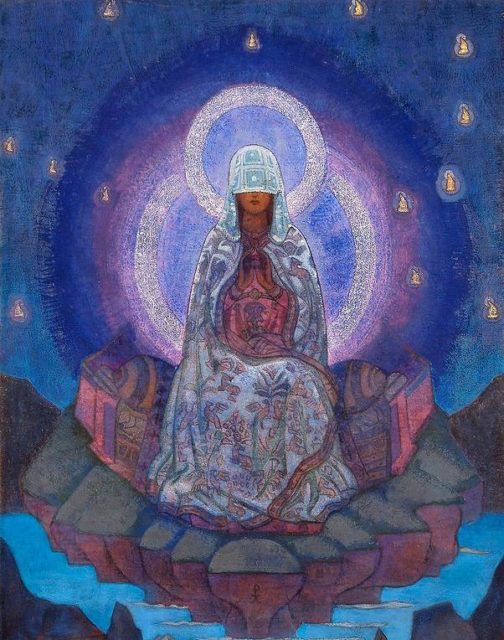
A representation of the Divine Mother to remind us of her love, and that without love the path is impossible.
Pentagram
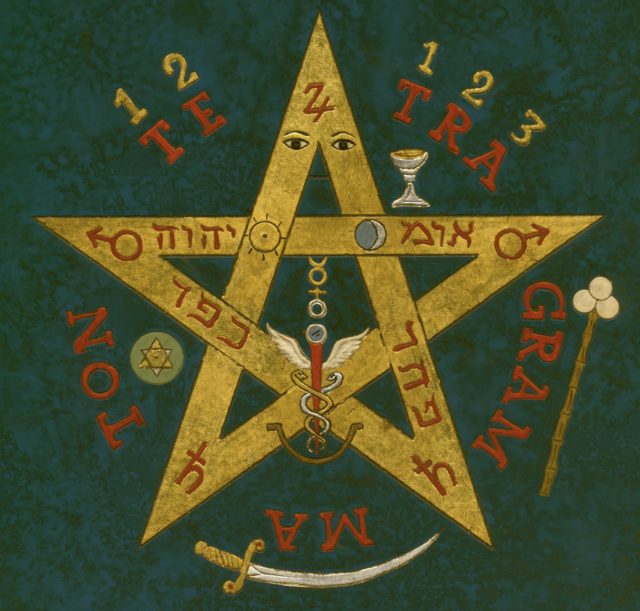
The pentagram, with the single point upwards toward the divine, is protective because it shows matter sacrificing itself for spirit. A pentagram pointing downward is negative because it represented the psychologically damaging principle of sacrificing spirit for matter.
Light

The light or candle is kept on the altar to remind us of the constant flame of devotion in our hearts for the Being. The Being is our inner light that shines in the darkness of the path.
Four Elements
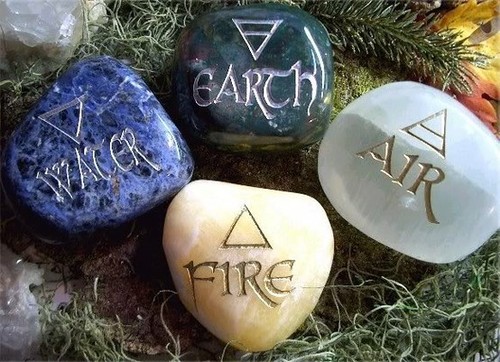
The four elements of nature signify the psychological purifications related to each element, and to remind us that the elements are our allies in this process.
The earth element is represented with a stone, crystal, or small vessel filled with clean soil. Earth teaches us endurance and stamina.
The water element represented with a small vessel of water. Water teaches us adaptability and flow.
Air can be represented with a feather, particularly from a high flying bird. Air teaches us non-attachment and objectivity.
The fire element represented with a lit candle or a lamp. Fire teaches us love and patience.
Flowers

Fresh flowers represent the virtues of the Being, the perfume of the Divine Feminine, and are an offering of beauty to the altar of God.
Space and Concealment
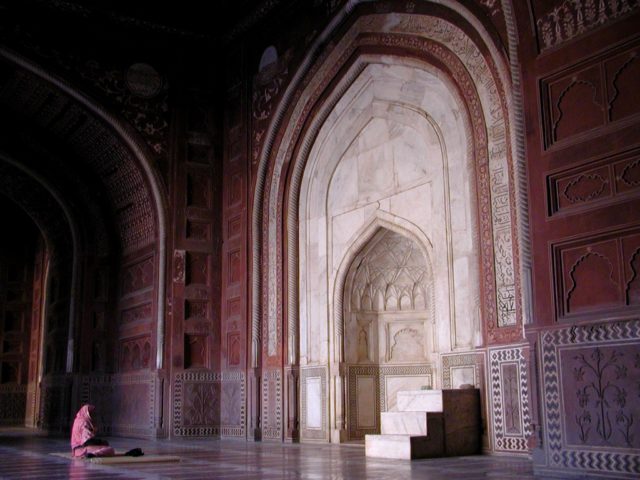
Around the altar, God may be represented with more abstract depictions such as curtains, tabernacles, mihrabs, or even the architecture of soaring cathedral ceilings. These conceal and also hint at the mystery of the divine qualities of emptiness and vastness.
The altar is kept clean to signify our work to clean ourselves of psychological defects and darkness.
The connection to the altar allows us to build that sacred space within our hearts, where all the aspects of God can be present to perform a work of transformation.

